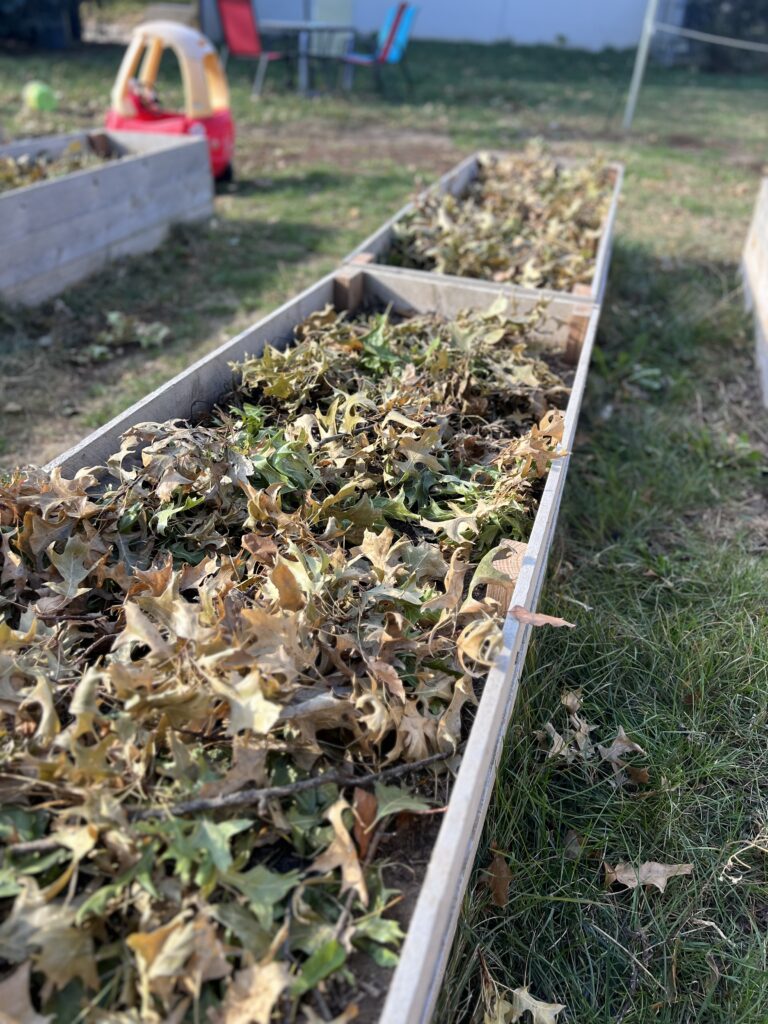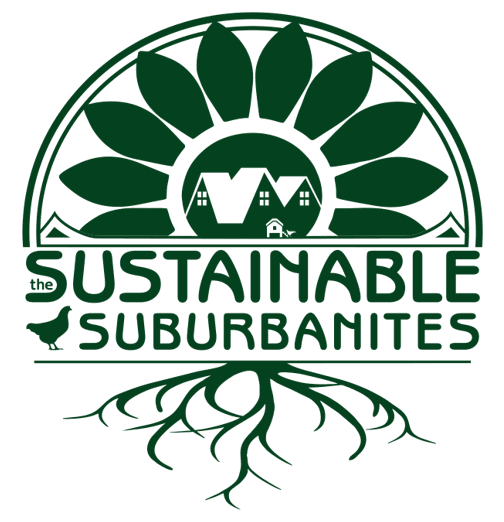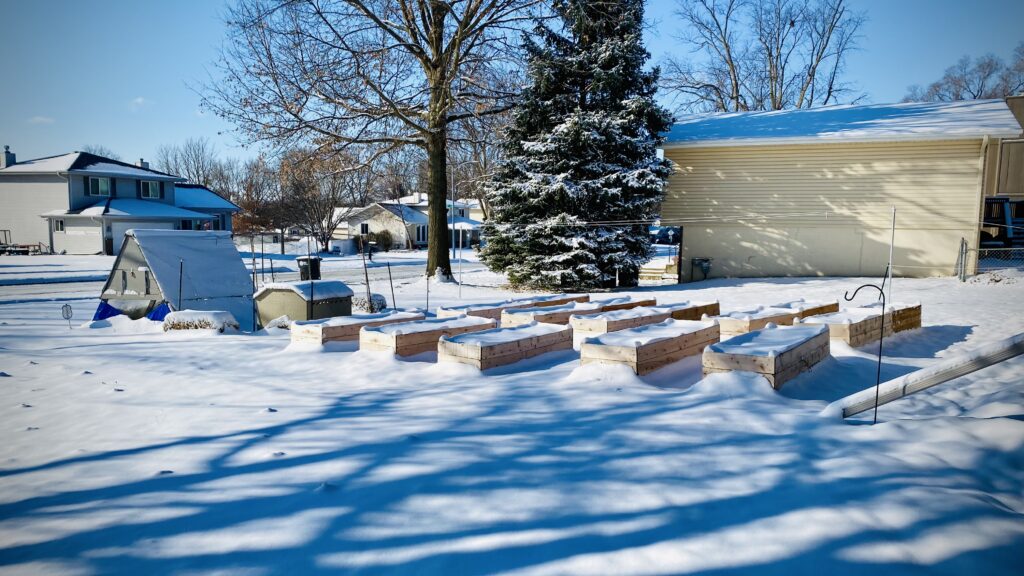The 2021 growing season has passed, the first frost has occurred, and our garden beds are mostly empty, aside from some lettuce and a Carolina Reaper pepper plant that we’ve been covering at night. It’s still plenty warm during the days, but fall is a short season here in Nebraska, and it’s time to prep our raised garden beds for winter!
This post may contain affiliate links, meaning we may earn a commission for any purchases made through our links.
This is our first year using raised garden beds so we gave quite a bit of thought to how we wanted to do this. Some folks recommend using plastic tarps or canvas to cover, but we weren’t about to go buying sheets upon sheets of plastic to use for this purpose. We also didn’t think that plastic would look very nice.
Instead, we opted to use the leaf litter from our front shade trees. Much of it fell into the native gardens where it will stay and serve as mulch there. A significant amount fell into our remaining “lawn” space and we raked that up to use as mulch cover for the beds.

The process of winterizing raised garden beds using these leaves was very simple. We’ll list out the steps for you here!
How to Winterize Raised Garden Beds Using Leaf Litter
1. Clear Out The Beds
We’d been clearing plants out as they stopped producing for the season, so they were fairly empty when we started the winterization process. We cleared out a few remaining veggies, pulled a handful of weeds, and boom bam, clean beds!
2. Rake Leaves
Next, we set to work raking up the leaves. Our front trees are large! They haven’t dropped much yet, but it was still more than enough for this project.

3. Crunch ‘Em Up (optional)
We crunched some of the leaves into smaller pieces for the first layer. We opted for this mix of the shredded and un-shredded mix, specifically to perform both soil nutrient and protective functions. We plan to add our compost in the spring this time around to focus our attention on this winterization experiment. Remember: Gardening is science and it’s fun to experiment!
4. Layer Into the Beds
Once we had our leaves raked and shredded to our liking, we layered them in! We lightly mixed the shredded leaves into the soil, then layered the whole leaves right on top. Neither layer was particularly thick, as we wanted to make sure some airflow was maintained.

5. Leave Em!
Then, Morgan sneezed 46,972 times and we were done! The whole process from start to finish took about an hour. We’re sure the neighbors are pleased that our lawn is “clean” for the time being, and the beds are all set for whatever weather winter throws at us this year.
Other things to do with leaves
Arts & Crafts
We have a toddler in our house who loves to make BIG messes. He’s had a great time simply running around in the leaf piles and gluing them onto scraps of paper.
Okay, okay, Morgan is excited to draw on leaves with paint pens, too… But she’s going to let the kiddo play first!
Mow Into Lawn
Fun fact: Raking leaves is entirely unnecessary for most people. It’s perfectly fine to simply mow them into the lawn, as long as you don’t have an absolutely ridiculous amount. (I’m talking several inches thick.)
We’ve already mowed (mown?) some into the grass, and we’ll probably get one more mow in before we’re done for the season. It’s been a super warm fall (thanks climate change) so the grass is weirdly still growing. We don’t have a ton of grass but what we do have could certainly use a nutrient boost after being neglected for so many years.
Compost
Anything remaining that we don’t wish to mow, leave or use for other projects will go into the compost.
For us, this is next to nothing. Aside from organic waste from the annual veggie plants, we really take great care to leave everything else as winter habitat protection.
Yard waste is an enormous source of methane in landfills. There is no reason for us to contribute to that in any way when we have a ready alternative available to us through our partnership with Hillside.

